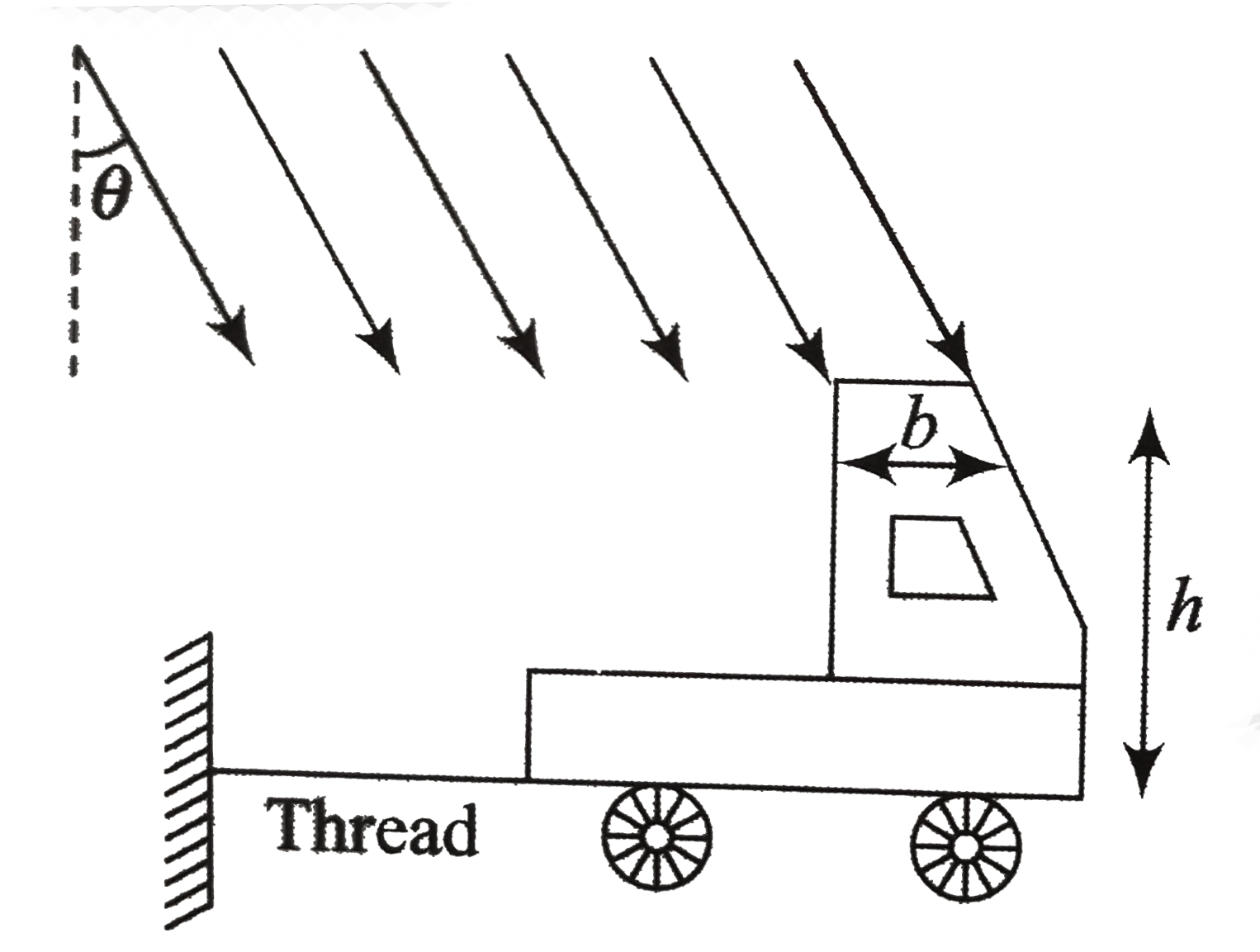
A toy truck has dimensions as shown in fig. and its width, normal to the plane of this paper, is d. The sun rays are incident on it as shiwn in the figure. If intensity of rays is I and all surfaces of truck are perfectly black, calculate tension in the thread used to keep the truck stationary. Neglect friction.
Video Solution
Text Solution
First, we have to calculate power incident on the truck and then momentum of light photons incident per second. Since the truck surfaces are perfectly black, therefore momentum finally reduces to zero. It means that the rate of change of momentum of light is equal to the momentum of photons incident per second.
Area of top of the driving cabin=bd.
Light is incident due to the component I cosθ of intensity I.
Power incident on top of the cabin=bdIcosθ
Similarly, power incident on rear horizontal part of the truck is adIcosθ and power incident on rear vertical wall of the driving cabin in hdIsinθ.
Total power incident on the truck is
P=(bcosθ+acosθ+hsinθ)Id
Momentum of these photons is p=Pc (where c is speed of light in vacuum).
But rate of change in momentum of photons,
p=(Idc)(bcosθ+acosθ+hsinθ)
This momentum is inclined at angle θ with vertical. Its vertical component pcosθ is balanced by normal reaction of the floor and horizontal component ψnθ is balanced by tension in the thread.
Tension =psinθ=(Idc(bcosθ+acosθ+hsinθ)sinθ)
|
Topper's Solved these Questions
- PHOTOELECTRIC EFFECTBOOK - CENGAGE PHYSICS ENGLISHCHAPTER - PHOTOELECTRIC EFFECTEXERCISE - Examples
8 Videos
- PHOTOELECTRIC EFFECTBOOK - CENGAGE PHYSICS ENGLISHCHAPTER - PHOTOELECTRIC EFFECTEXERCISE - Exercise 3.1
15 Videos
- NUCLEAR PHYSICSBOOK - CENGAGE PHYSICS ENGLISHCHAPTER - NUCLEAR PHYSICSEXERCISE - ddp.5.5
14 Videos
- RAY OPTICSBOOK - CENGAGE PHYSICS ENGLISHCHAPTER - RAY OPTICSEXERCISE - DPP 1.6
12 Videos
